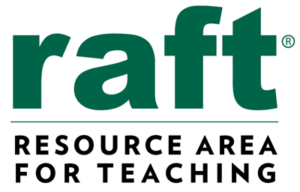Giving Positive Reinforcement to Inspire Your Students
By Eric Welker, Master Teacher and Activity Developer, RAFT
Positive reinforcement is simple and necessary in all classrooms – but can be forgotten while class rigor becomes more demanding. Here are some easy tips to remind ourselves to praise our students daily.
1. Have a small whiteboard outside the classroom and write a positive message on it to remind students that you are glad to see them. Messages such as: “We’re lucky you came today, it’s going to be an amazing day!”, or “I will give you my 100% today.” This type of positivity will have students coming to class with smiles on their faces and sets the tone for a fantastic day.
2. Incorporate stickers into your daily routine. As children, we all loved receiving stickers, but even young adults enjoy small rewards such as stickers for participation. Small stickers may be placed on the front of folders or binders for students asking wonderful questions or participating. An easy way is to have a clipboard with all the students names and tally how many stickers they have earned and pass them out at the end of class. Of course, the teacher should give praise right away, but the students can wait for the physical reward until the end of class.
3. Focus praise on the student, not just how you feel about their accomplishment. I consciously try to say “You did ….” which focuses the praise on the student. Teachers can also post positive sentence frames throughout the classroom to remind themselves of positive phrases.
I have seen teachers in upper elementary grades use the Santa Clara County Office of Education Norms of Effective Collaboration table tents with the Seven P’s during group work . The Seven P’s are pausing, paraphrasing, putting ideas on the table, pulling them off, paying attention to self and others, presuming positive intentions, and pursuing a balance between advocacy and inquiry.
Group work can be very difficult for some individuals, and being able to communicate in an effective and approachable way is a valuable life skill. So please remember that teachers are not the only people in the classroom. Students need teachers to positively praise them, and also need to have the tools to positively praise each other.

